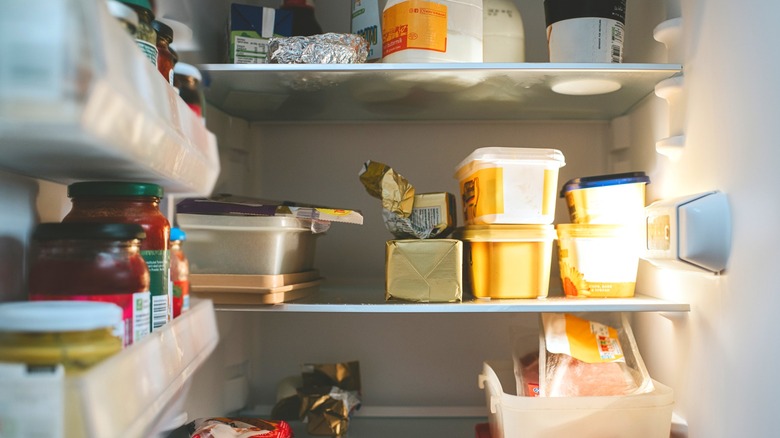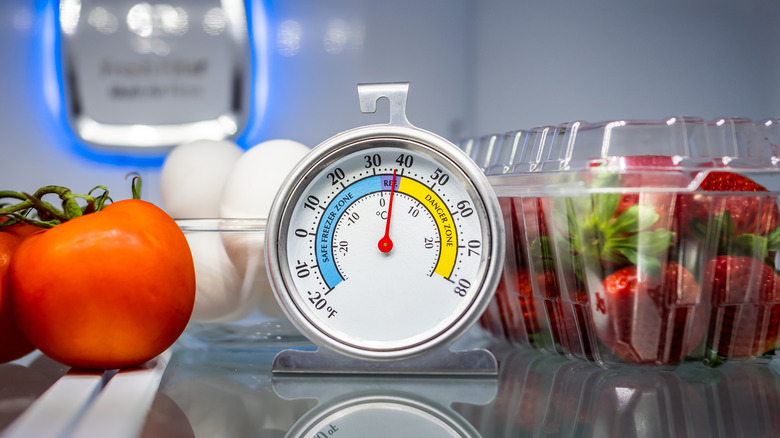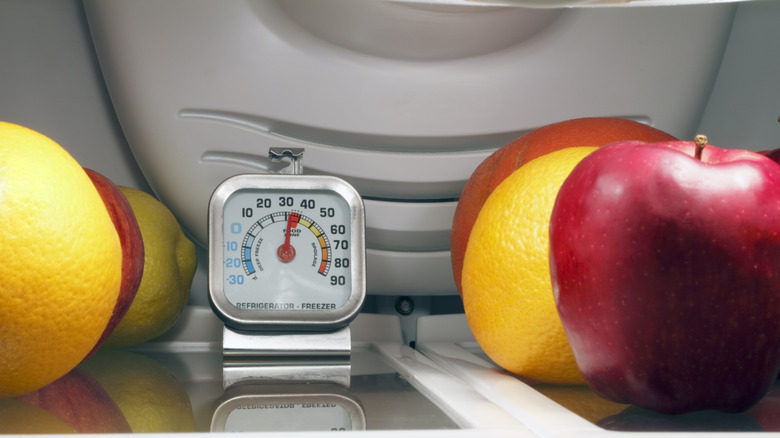This Fridge Addition Will Save So Much Food From Going To Waste
Start looking at food waste in America and you soon learn some pretty shocking statistics. According to RTS, food takes up about 22% of landfill space, a higher percentage than any other type of garbage. An estimated 30 to 40% of the nation's entire food supply is wasted. What does this mean for the average family? Essentially, that it's important to avoid food waste. In 2023, data collected by MITRE and Gallup found that if an average American household eliminated their food waste, they would save around $1,500 a year. Properly storing and using leftovers would specifically make a huge difference here. Fortunately, there's one very easy thing you can do to help make sure those leftovers are safe to eat: Put a thermometer in your fridge.
It might seem obvious that cold food needs to stay cold, but it turns out that not everyone is familiar with the precise details involved in accomplishing this. The U.S. Food & Drug Administration conducted a survey in 2016, and found that 84% of participants weren't using a fridge thermometer. Study participants were also asked about the temperature they kept their fridge at, and 44% had no idea. With that in mind, let's talk about why you need a fridge thermometer.
Here's why you definitely need a fridge thermometer
Do a quick search online, and you'll find countless refrigerator thermometers for sale. They're an affordable investment for every kitchen, because the temperature inside your fridge can start to fluctuate over the course of its life. But will just any thermometer do? No — it's actually important to get one specifically meant for refrigerators. You're aiming to keep the appliance within a relatively narrow temperature window, and fridge thermometers are meant to be highly accurate within that specific range.
Different areas of your fridge are going to be different temperatures, so your best bet is to put your thermometer in one of the warmer areas. That's usually in the front on one of the top shelves. If this area is within your target temperature range, that's good news. You should also keep in mind that your fridge temperature isn't something you can measure once and then never think about again. Make it a point to check the temperature on a daily basis, as there are a number of factors that can cause it to fluctuate out of the safe range. If the ambient temperature in your kitchen is abnormally hot or cold, for example, that can change what's going on in your fridge. Keep an eye on that thermometer, though, and you'll make sure you're keeping everyone safe.
A glass of water can help you set your fridge temperature correctly
What temperature should you set your refrigerator to? The golden rule is that your fridge should never be above 40 degrees Fahrenheit, and never below 32 degrees Fahrenheit. If it's too warm, you're risking spoiled food and food poisoning. Too cold, and your fridge is more of a freezer than a refrigerator.
A good fridge thermometer should be waterproof. This is because the FDA recommends checking the internal temp of your fridge by using a very specific method. Fill a glass with water, submerge your thermometer, and leave it in the fridge for at least five hours. (Some other experts recommend leaving it overnight.) That's going to give you an incredibly accurate temperature reading, as it's not just measuring the temperature of the air in the fridge, but the temperature that the fridge's contents are reaching.
Adjust your fridge's thermostat as necessary, and keep in mind that it can take hours for those changes to take full effect. Also, keep in mind that there are a few common mistakes that are easy to make with your fridge, and they can impact temperature. Remember not to overcrowd shelves or block air vents and check the temperature regularly, and those leftovers will stay fresh instead of getting wasted.


